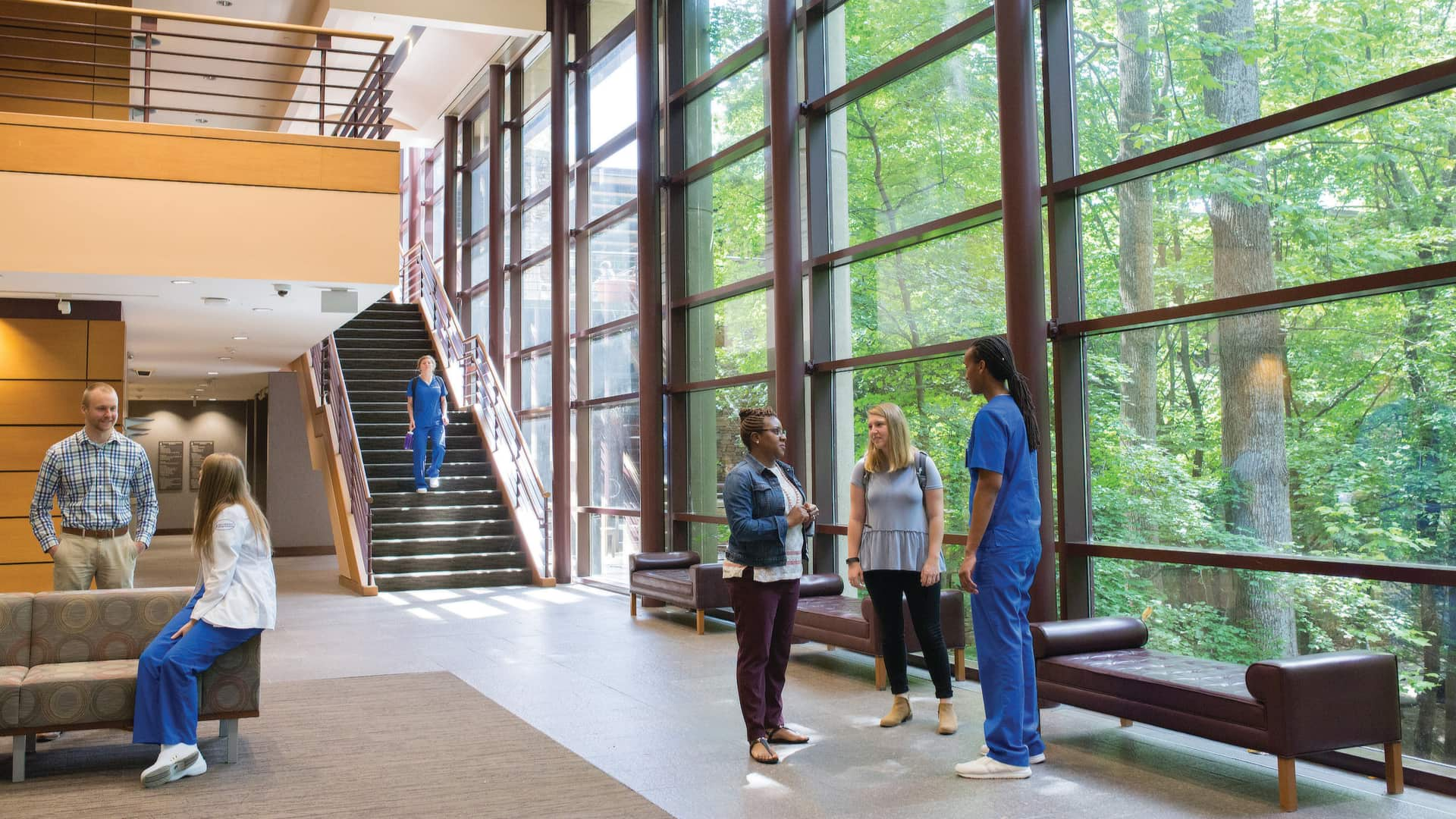Having one college serve as an umbrella for the four schools was the vision of Nena Sanders, former Moffett & Sanders School of Nursing dean and founding College of Health Sciences vice provost. Sanders’ multifaceted career provided her with a unique viewpoint, understanding that interprofessional education would be transformative for Samford students interested in a career in today’s ever-evolving health care industry and its team-based approach to care.
In 2006, Andrew Westmoreland was settling into his new role as university president when Sanders first approached him with the idea. “I recall him being supportive and excited about the idea’s potential, but he also felt the timing wasn’t right,” she said.
Sanders waited six years and brought the idea to Westmoreland again. This time, the timing was right, and Sanders worked to formulate a plan and present the idea to the Board of Trustees.
“The establishment of a College of Health Sciences was a bold step because it wasn’t necessarily the direction stakeholders expected us to go,” said Sanders. “Our liberal arts programs have always been very strong, but the establishment of the College of Health Sciences provided an opportunity for us to grow our portfolio and impact the community in a unique way.”
At the time of board approval, there was not a clear plan for where the college—with its four schools—would be located. Sanders and Westmoreland discussed a variety of options and actually began the process of hiring faculty before a permanent location was determined.
Within that same year, Buck Brock, executive vice president and vice president for business and financial affairs, received a call from Southern Progress Corporation explaining the property they owned adjacent to campus was available for purchase.
The acquisition was finalized in 2014, and, over the next year, the corporate offices were transformed into state-of-the art facilities designed to foster collaboration between health care disciplines. Today, the 223,000-square-foot facility features offices, classrooms, student study spaces, clinical and research labs, and a 22,000-square-foot Experiential Learning and Simulation Center.
“Throughout the entire process, Westmoreland showed strength, dedication and was a true advocate of the college,” Sanders said. “He was unwavering in his vision and extremely supportive every step of the way.”
Since the inception of the College of Health Sciences, 17 new graduate programs have been added to the academic offerings of Samford University and the college makes up more than 40% of the institution’s student body.
“Through the college, Samford has been enhanced. We have seen tremendous growth in science-based programs, online education, research and professional scholarship, but Samford’s Christian mission has also been carried to a wider world,” said Sanders. “Our graduates are distinct and highly sought after, not only because their interprofessional education has prepared them for the nature of today’s health care industry, but, furthermore, they are providers who are prepared in the likeness of Christ.”


